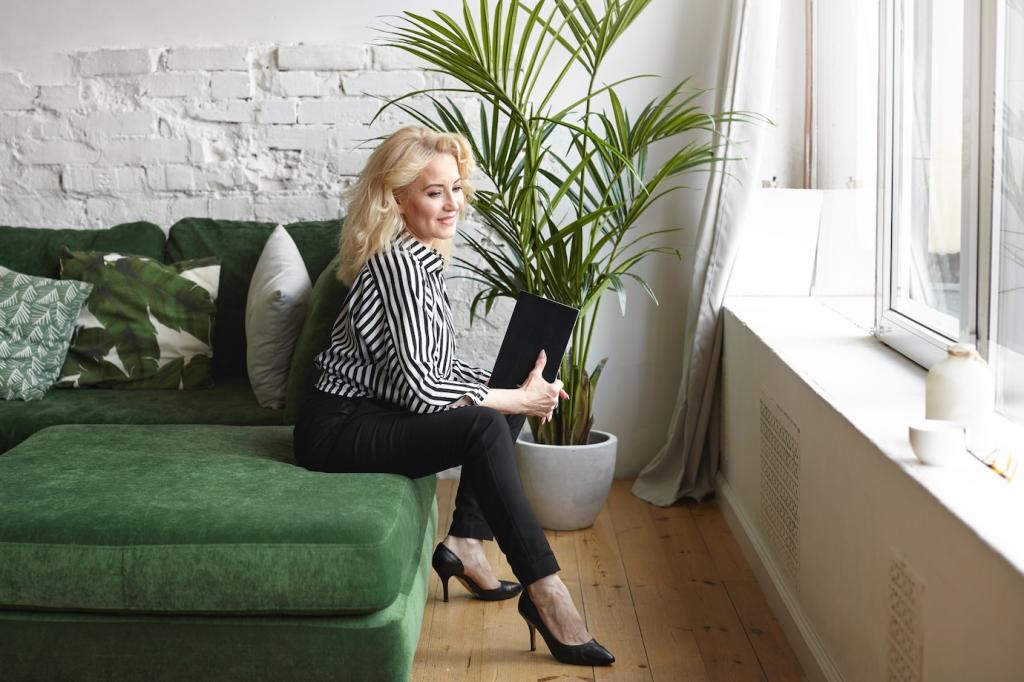Living Walls, Living Planet: Biodegradable Wall Coverings
Natural fibers and plant-based binders
Biodegradable wall coverings are typically made from cellulose, hemp, jute, kenaf, cork, or agricultural residues, bound with starch- or casein-based adhesives. Many use uncoated paper or flax backings and avoid PVC, halogens, and phthalates. The result is a wall finish that feels organic, looks refined, and keeps indoor air refreshingly low in toxins.
How biodegradation actually happens
When exposed to oxygen, moisture, and microorganisms, natural fibers break down into simpler, non-toxic components. True biodegradability depends on the whole system: pigments, coatings, and adhesives must also be compatible. Many coverings compost in industrial facilities; some can decompose in home systems. Always check disposal guidance and keep synthetic paints off surfaces intended for compost.
Certifications and standards to trust
Look for credible labels like FSC or PEFC for fiber sourcing, Cradle to Cradle for circularity, and certifications such as Blue Angel or Greenguard Gold for low emissions. Some products carry OK compost INDUSTRIAL markings. Ask brands for test reports and material safety data. Share in the comments which labels you rely on when choosing biodegradable wall coverings.
Design Without Compromise
From woven jute and grasscloth to cork veneer and embossed paper, biodegradable wall coverings deliver tactile richness and gentle, natural irregularity. These surfaces soften echoes, add warmth, and invite touch without plastic sheen. If texture transforms your space, tell us which patterns you love, and consider ordering samples to compare under your own lighting.
Design Without Compromise
Many biodegradable wall coverings use mineral pigments and plant-based dyes, yielding grounded, calm palettes with impressive depth. Think ochres, indigos, charcoals, and herbaceous greens that feel quietly sophisticated. Always patch-test for lightfastness and sheen. Share your favorite palettes below, and subscribe for our seasonal mood boards created exclusively with biodegradable options.


Performance, Care, and Everyday Realities
Natural fibers are vapor-permeable, helping walls dry faster and lowering mold risk when paired with breathable paints. In moderate-traffic areas, they age gracefully, gaining character rather than scuffs. Consider a natural wax or plant-based finish where extra protection is needed. Tell us where you plan to install, and we’ll suggest fiber and finish combinations.

Performance, Care, and Everyday Realities
Most biodegradable wall coverings respond well to gentle care: a soft vacuum brush, microfiber cloth, and mild, pH-neutral soap for spot cleaning. Avoid ammonia or harsh solvents. Always test in an inconspicuous corner, then blot rather than rub. Share your cleaning wins—or disasters—so others can learn the best maintenance routines for these materials.

Stories from Real Spaces
New parents selected a pale, mineral-dyed grasscloth biodegradable wall covering. The soft texture muted nighttime echoes and made daylight feel gentler. They wrote that bedtime battles eased, and visitors noticed a serene hush. If you are planning a nursery, comment with your palette ideas, and we’ll suggest fiber types suited to tiny hands and big feelings.
Your Next Step: Explore, Compare, Decide
Create a focused shortlist
Compare materials, backings, adhesive compatibility, finishes, and end-of-life pathways. Ask for fiber percentages and emission data. Aim for transparent suppliers that disclose sourcing and test results. Keep notes about texture, sheen, and scent. Share your top contender in the comments, and we’ll offer community feedback in our upcoming email digest.
Test with intention at home
Order swatches and tape them on multiple walls. Observe in morning, afternoon, and evening light. Smudge, wipe, and note fingerprints. Try a tiny cleaning test and a corner seam mockup. Photograph everything. Then tell us which biodegradable wall covering felt right, and subscribe to get our printable swatch evaluation worksheet.
Join the conversation and stay inspired
Have questions about biodegradable wall coverings, adhesives, or room suitability? Post them below so we can respond in future guides. Subscribe for monthly case studies, checklists, and expert Q&A. Your stories and experiments help others choose confidently—and keep more beauty, and less waste, in circulation.
